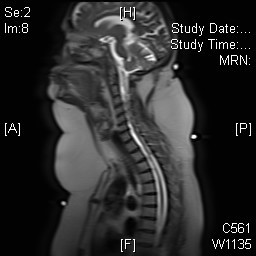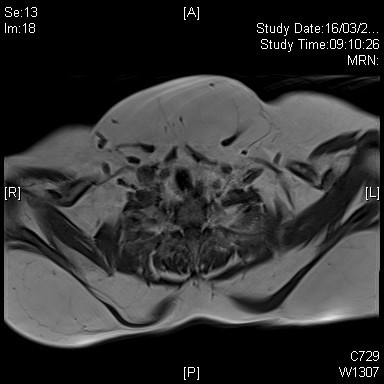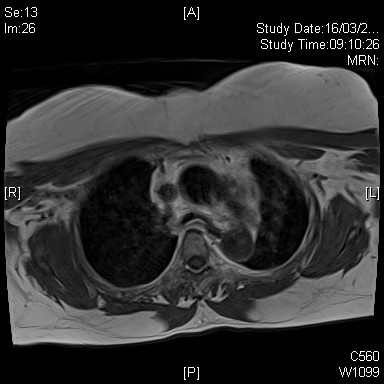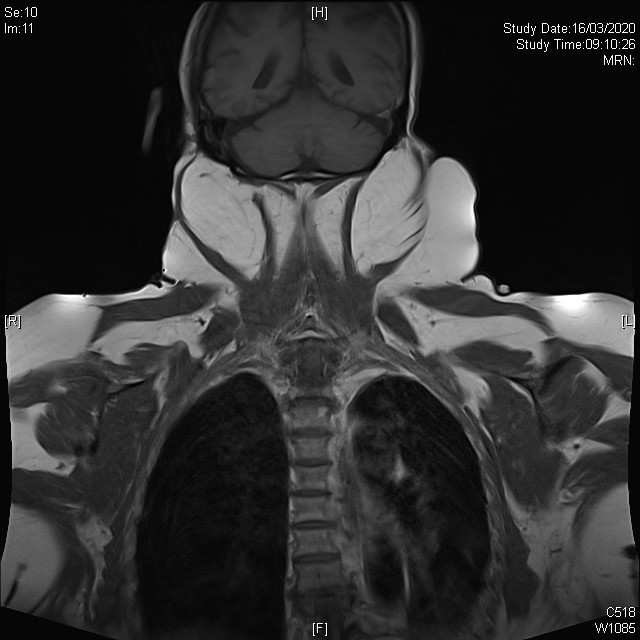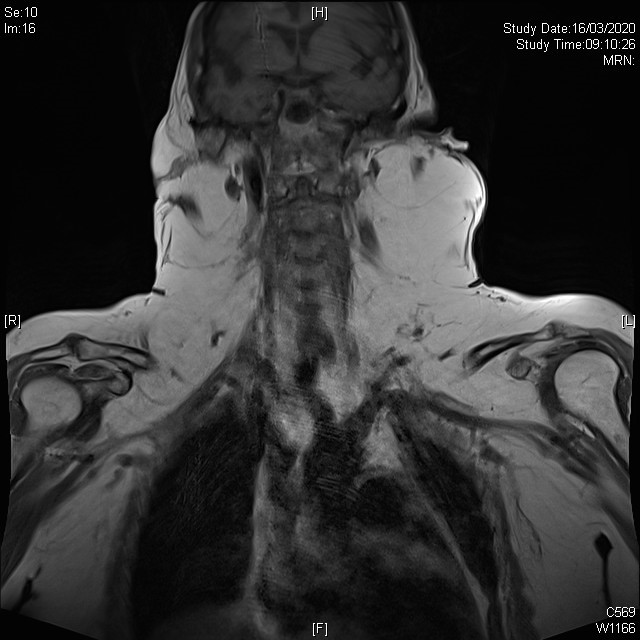Answer of December 2020
For completion of the online quiz, please visit the HKAM iCMECPD website: http://www.icmecpd.hk/
Clinical History:
This 50-year-old gentleman with known alcoholism complained of enlarging bilateral painless neck and upper trunk masses. MRI was performed.
(Scout view)
T1 axial of neck
T1 axial of thorax
T1 axial of thorax
T1 coronal
T1 Coronal
Imaging Findings:
- Extensive symmetrical fatty deposition at neck, supraclavicular fossae and scanned part of chest wall, involving the subcutaneous layers and intermuscular planes, most prominent at the sternocleidomastoid, trapezius, and levator scapulae muscles.
- Increased mediastinal fat deposition, resulting in narrowing of airway at the level of carina.
Diagnosis:
Madelung disease
Discussion:
Madelung disease, also named as multiple symmetric lipomatosis (MSL), Madelung-Launois-Bensaude syndrome, or neck lipomatosis, is an overgrowth syndrome. It is characterized by the presence of multiple and symmetric painless non-encapsulated fatty deposits, usually involving the neck, upper trunk, and proximal limbs around shoulder and hip girdles.
It usually presents at middle age, more common in male, with a reported male to female ratio of 15:1. The etiology of this rare disease entity is unknown. An association of alcoholism has been described, and postulated to be related to adipocyte hyperplasia in genetically susceptible individuals.
On imaging, the fatty deposits are typically non-caspulated, with non-destructive displacement of surrounding structures. The distribution is mainly along the anterior or posterior subcutaneous tissues of neck and upper torso, deep under the sternocleidomastoid and trapezius muscles as well as posterior triangle of the neck. The masses are non-tender on sonography.
Patients are advised to refrain from alcohol consumption. Surgical removal of the lesions is mainly for cosmetic reasons or secondary to aerodigestive compression. Recurrence is frequently described.
